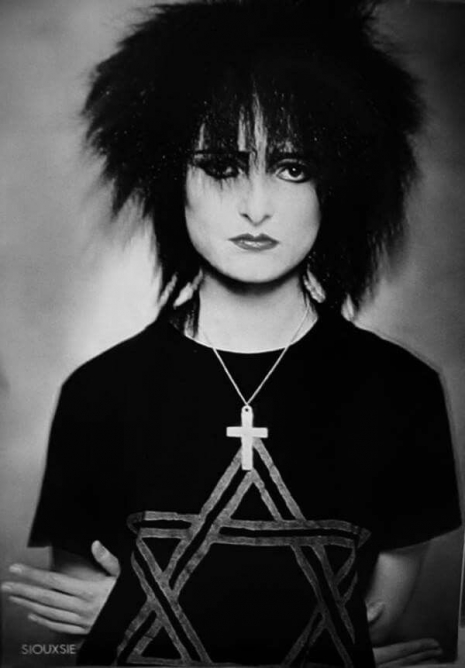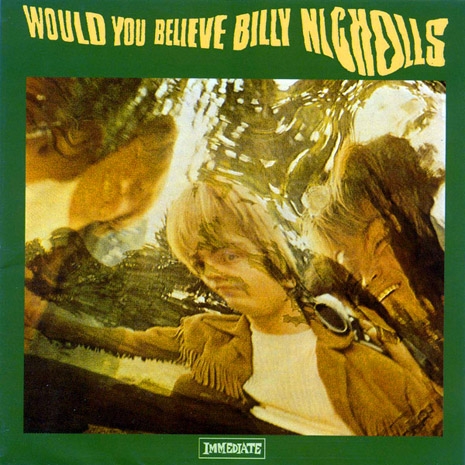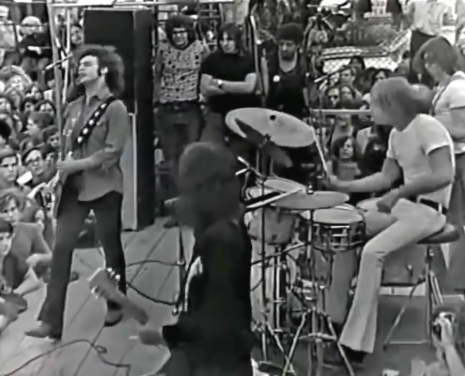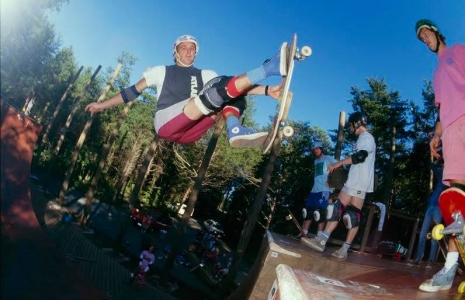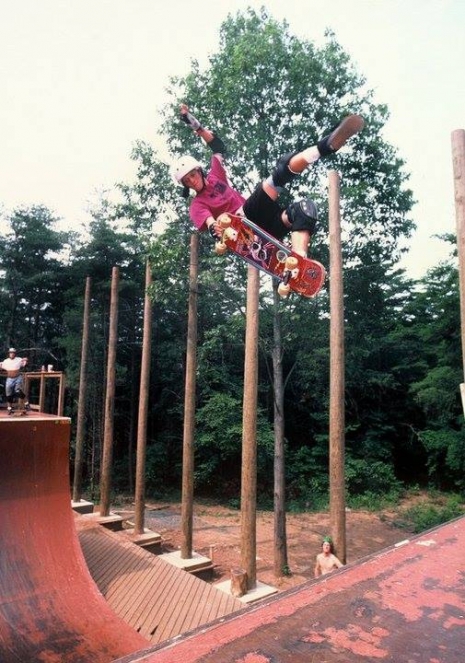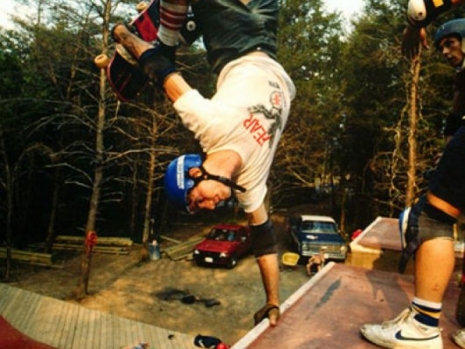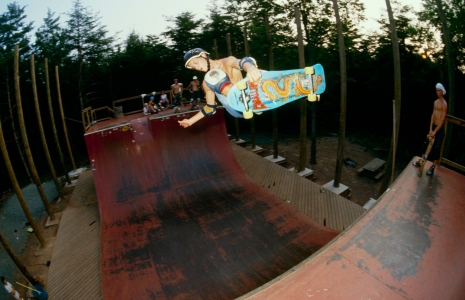
Servant and Master: Hannah Cullwick and Arthur Munby.
Arthur Munby was a lawyer, civil servant, flâneur, and minor poet. Hannah Cullwick was a maid of all work—the lowliest of all servants. When they met each other by chance on Oxford Street, London in 1854, the pair began an obsessive and fetishistic relationship that lasted for over fifty years—until Hannah’s death in 1909.
Munby was a middle-class gentleman. He was therefore expected to perform his role as a gentleman by the class codes of Victorian society. Munby was respectable and seemingly decent but he had a dark secret—he was a voyeur who was deeply aroused by the appearance of grimy working-class women. He loved their hard, masculine shape. Their muscles, their scars, and deformities. He had one particular obsession for poor women who had lost their noses through accident or by disease. Munby photographed many of these women claiming it was part of his “studies” into working-class life.
Hannah was of yeoman stock. She started work as a servant girl at the age of fourteen. Her father had run several businesses which had failed. This meant Hannah was sent away to work as a drudge. But Hannah had a fetish for work. The dirtier, nastier, more degrading, the more she enjoyed it. She often stripped naked to clean out chimneys, sitting on a rafter high up in the chimney surrounded by and covered in hot smoldering soot.
It seemed this pair were somehow destined to meet.
There were two important events that pushed Hannah towards her relationship with Munby. She often read fortunes using tea leaves for her fellow servants. One day she saw the face of her future suitor—a respectable, bearded gentleman. It seemed highly unlikely that Hannah would ever enjoy a relationship with such a man, but she felt it might one day happen. The second event was when she attended a performance of the theatrical spectacle The Death of Sardanapalus. Based on the celebrated poem by Lord Byron, The Death of Sardanapalus tells the story of the love of a slave Myrrha for the weak king Sardanapalus:
Master, I am your slave! Man, I have loved!—
Loved you, I know not by what fatal weakness,
Although a Greek, and a born a foe to Monarchs—
A slave, and hating fetters—an Ionian,
And, therefore, when I love a stranger, more
Degraded by that passion than by chains!
Still I have loved you…
Hannah identified totally with Myrrha—who although a slave was free in her love.
On May 26th, 1854, Munby stopped Hannah on the street and quizzed her about her work as a servant. Hannah recognized Munby as the face she had seen foretold in her tea leaves. It was literally a love at first sight. Munby asked Hannah to write to him describing in exact detail every aspect of her work. Munby expressed an interested in the more degrading, demeaning, and physically dirty details—how Hannah’s skin would be smeared with soot and grime, how the work exhausted her.
Hannah wrote Munby every week. She also kept a diary, which she read to him when they met. Together they played out roles. She called Munby “Massa” and wore a dog’s collar to show she was his slave. He measured her biceps (fourteen inches) and hands (four inches) and allowed himself to be carried by her around his home as if he were a child or baby. Hannah also had a fetish for cleaning Munby’s shoes with her tongue—claiming she could tell where “Massa” had been by the taste of the soil on his soles.
Munby photographed Hannah in her various roles—as a maid, blacked-up as a chimney sweep, dressed as a man, and as a middle-class lady in a fine dress. Munby’s love for Hannah led to his proposing marriage. Hannah was at first against this suggestion as she felt it would finish her sense of empowerment over Munby. Eventually, she relented and the couple married in secret in 1873.
But Hannah was stifled by their marriage and the pleasure she had once found in being a servant, a slave to Munby was gone. She left their home and returned to work as a servant in the north of England. However, their secret, obsessive relationship continued well into old age with secret meetings and a flurry of letters sent between the two.
During one of their last meetings, Hannah prostrated herself in front of Munby and licked his boots clean. Munby was embarrassed and pulled Hannah up to kiss the “sweetness of her lips—her country lips which [had] the velvet touch.” Though they unquestionably loved each other, it seems unlikely that their relationship was ever consummated. Their sexual pleasure appears to have been solely derived from their role-playing and the strange power games of master and servant.
As Munby was a respectable middle-class man, and Hannah a lowly servant, their taboo relationship and their marriage remained secret throughout their lives. Hannah died exhausted and senile in 1909, Munby died the following year. At the reading of his will, the full story and extent of their love for each other was revealed. A box containing hundreds of photographs, letters, and diaries between husband and wife was offered to the British Museum who refused it on moral grounds. This box was then given to Trinity College, Cambridge, under the proviso it was not to be opened until 1950.
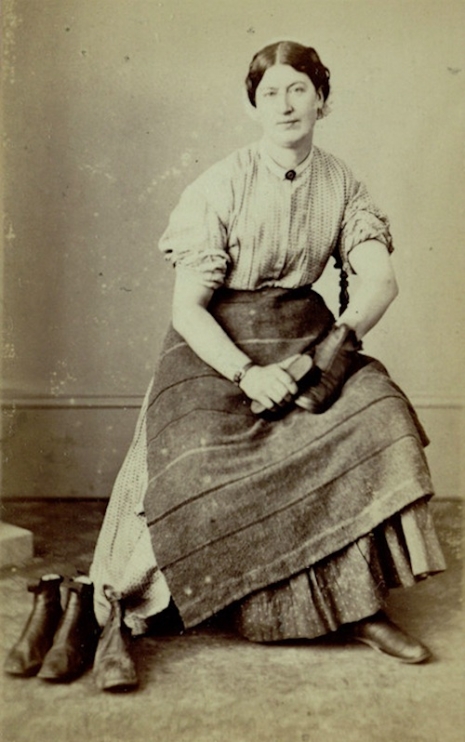
Hannah cleaning boots.
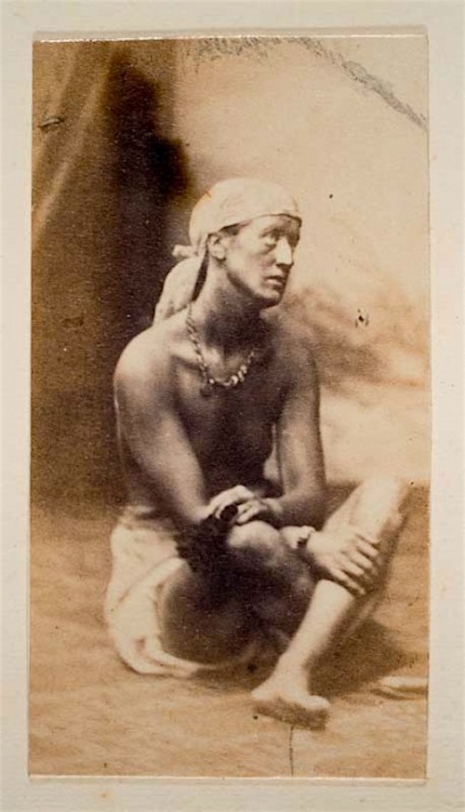
Hannah blacked-up from cleaning the soot from chimneys.
More photographs of Hannah Cullwick plus a short film, after the jump…
